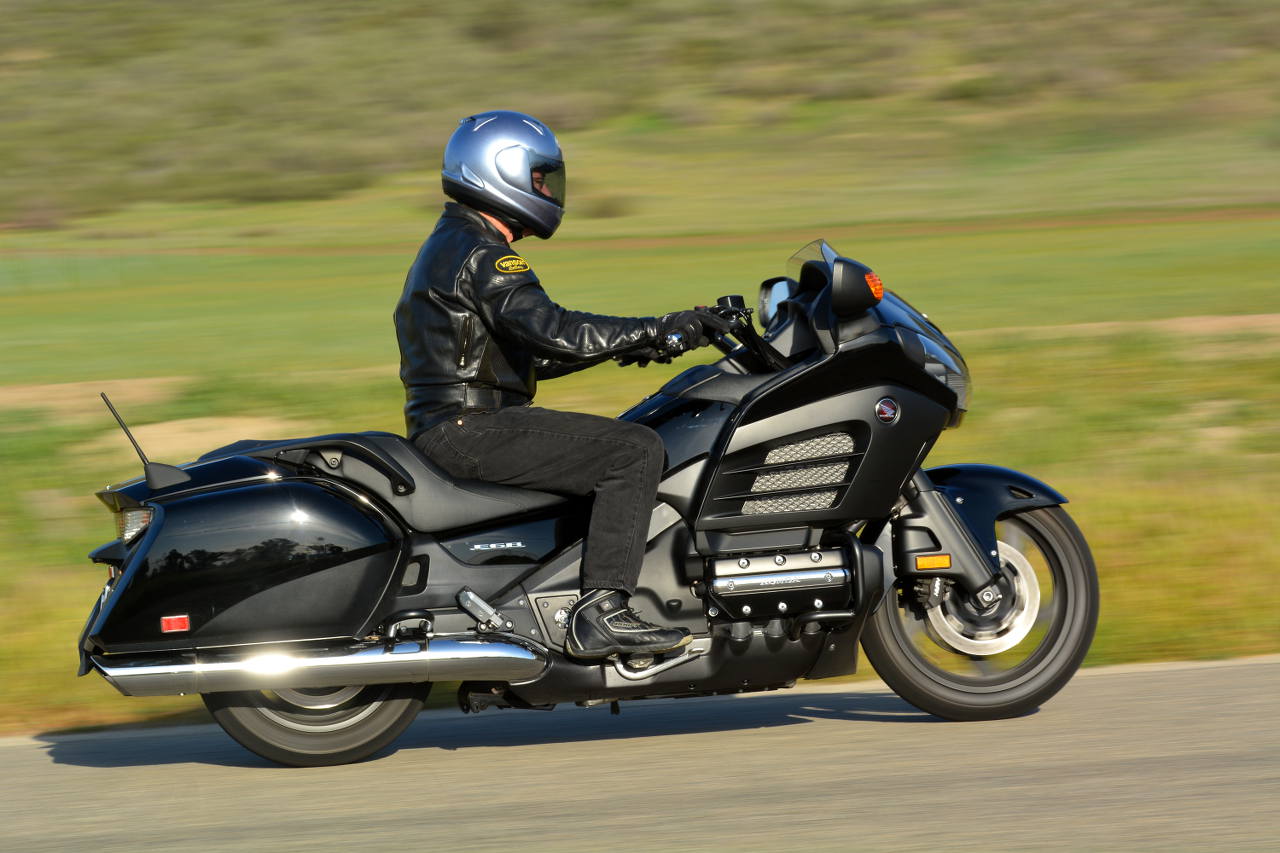
The median age of motorcyclists in the United States is now 50 – up from 47 in 2014, according to a MIC survey. The percentage of female riders is up to 19%, definitely a good sign. Take a look at the MIC press release for more study findings below.
Today’s Motorcyclists Revealed by Latest MIC Owner Survey
IRVINE, Calif., Feb. 04, 2019 — We know that more motorcycle owners these days are women, and now we know increasing percentages of all owners are married and college graduates, and they’re generally older, according to the 2018 Motorcycle Industry Council Owner Survey.
“Demographics are changing for Americans across the country and it’s no different for motorcycle owners,” said MIC President and CEO Tim Buche. “For decades, the MIC Owner Survey has told us a lot about who we are, and we’re now learning how things have shifted since our last study was done in 2014. Some of the stats are encouraging, like the increasing number of women owners, while other data, such as the rising median age, show where we have more work to do.”
Gender, Age, Marital Status
Male Owners – 81 percent
Female Owners – 19 percent
Median Age
2018 – 50
2014 – 47
2012 – 45
Married
2018 – 68 percent
2014 – 61 percent
2012 – 63 percent
Education, Income and Work Status
College Graduate
2018 – 24 percent
2014 – 20 percent
2012 – 17 percent
Median Household Income
2018 – $62,500
2014 – $62,200
2012 – $64,100
Employed – 71 percent
Retired – 24 percent
The owner survey also uncovered trends among the emerging group of millennial motorcyclists. More than half have taken a training course and use their bikes frequently for commuting. Sixty-nine percent say they are interested in electric motorcycles, citing fuel and the environment as top drivers.
“For the past several years, manufacturers have offered more great entry-level motorcycles at affordable prices,” Buche said, “while at the same time focusing on increasing the industry’s outreach to millennials.”
The Motorcycle Industry Council exists to preserve, protect and promote motorcycling through government relations, communications and media relations, statistics and research, aftermarket programs, development of data communications standards, and activities surrounding technical and regulatory issues. As a not-for-profit national industry association, the MIC seeks to support motorcyclists by representing manufacturers, distributors, dealers and retailers of motorcycles, scooters, ATVs, ROVs, motorcycle/ATV/ROV parts, accessories and related goods and services, and members of allied trades such as insurance, finance and investment companies, media companies and consultants.
The MIC is headquartered in Irvine, Calif., with a government relations office in metropolitan Washington, D.C. First called the MIC in 1970, the organization has been in operation since 1914. Visit the MIC at mic.org.

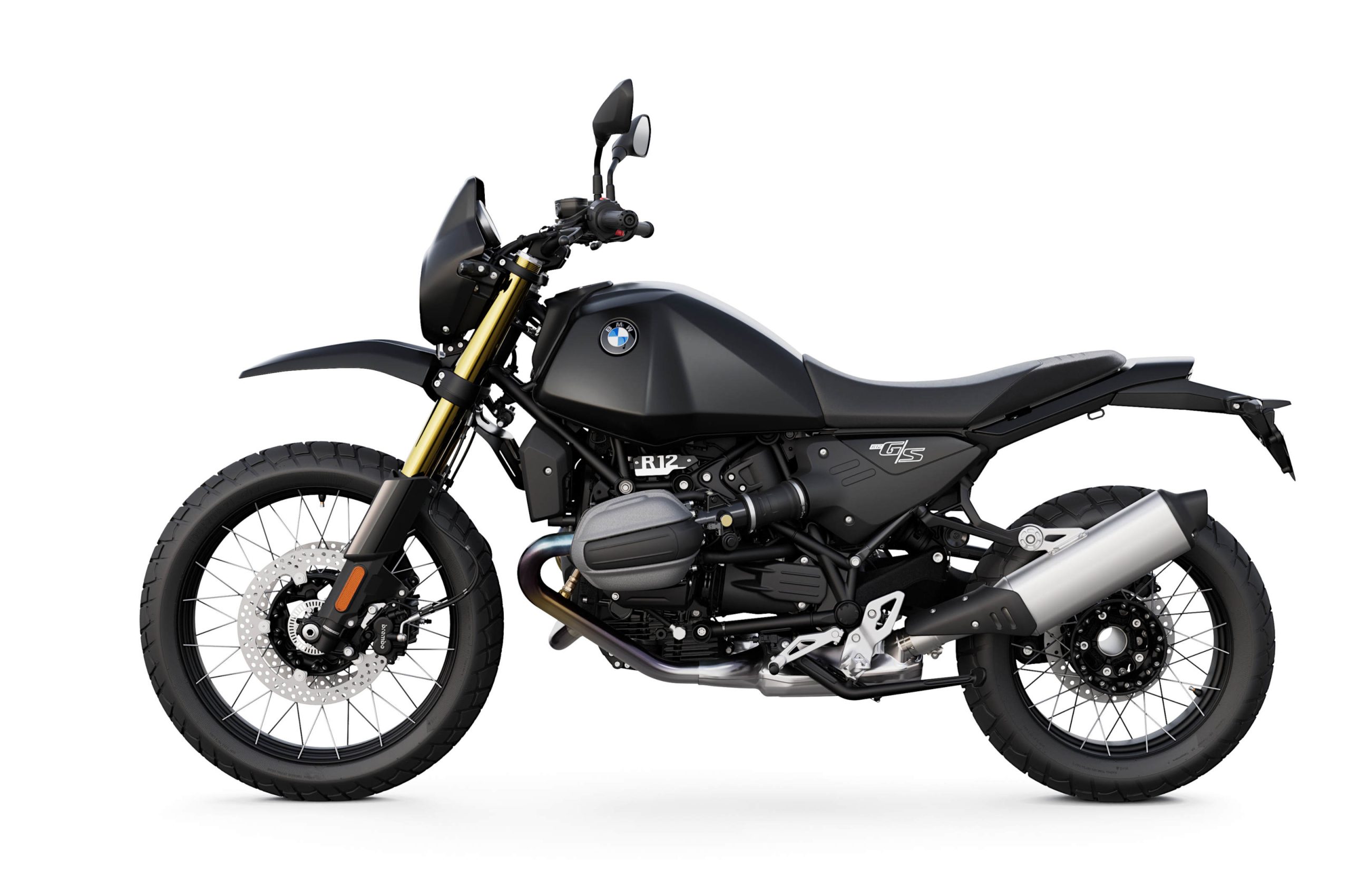
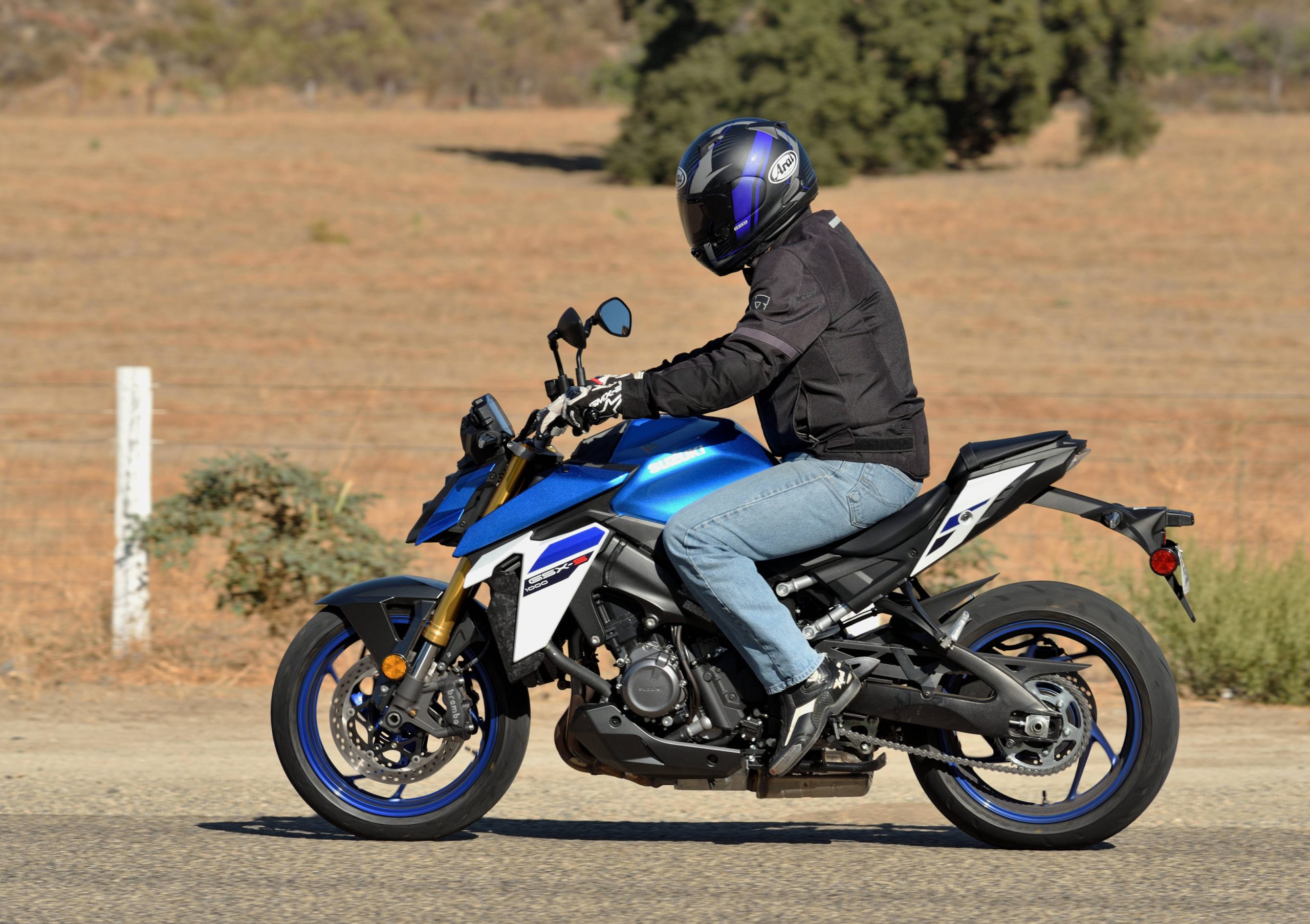
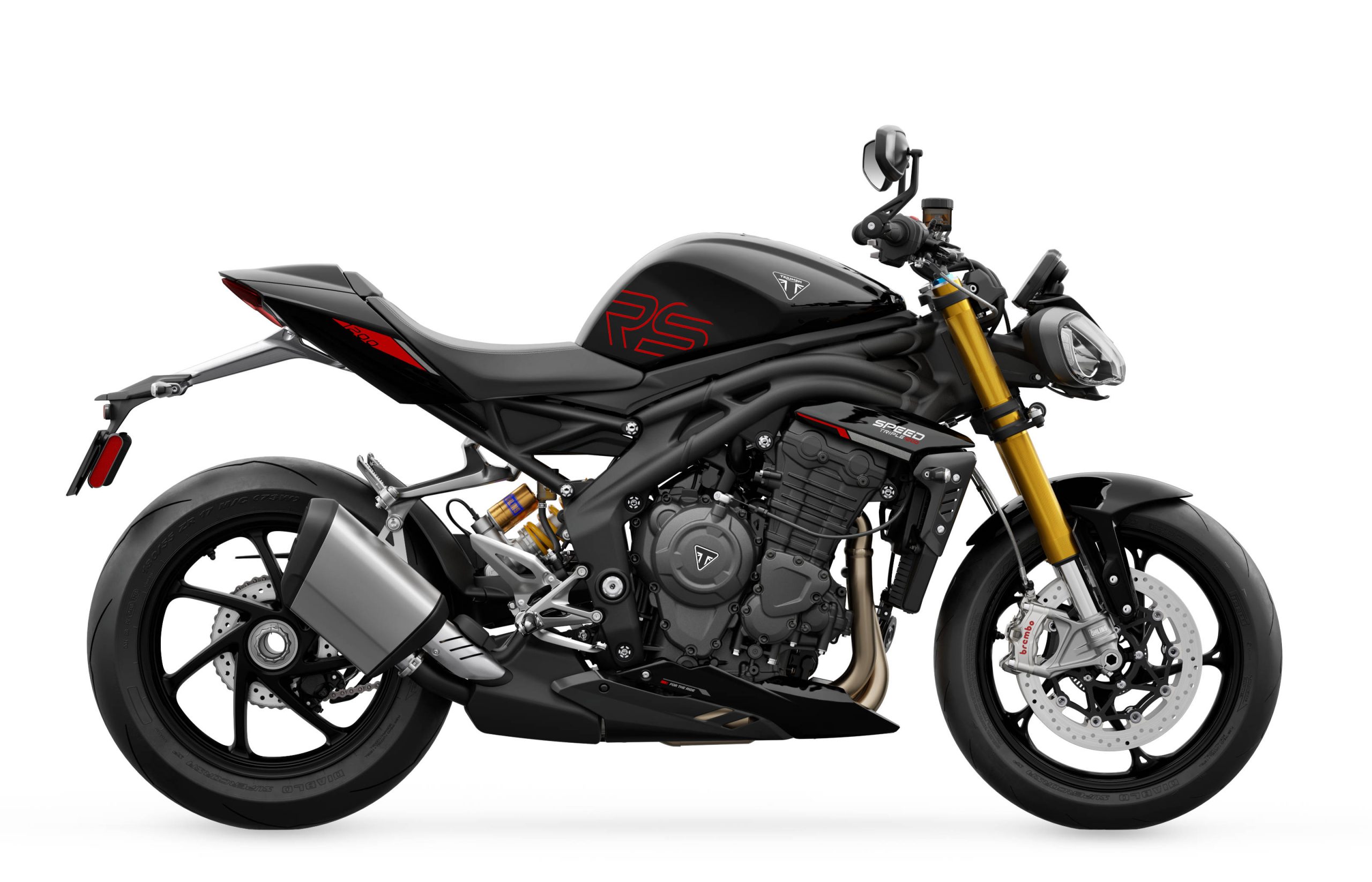
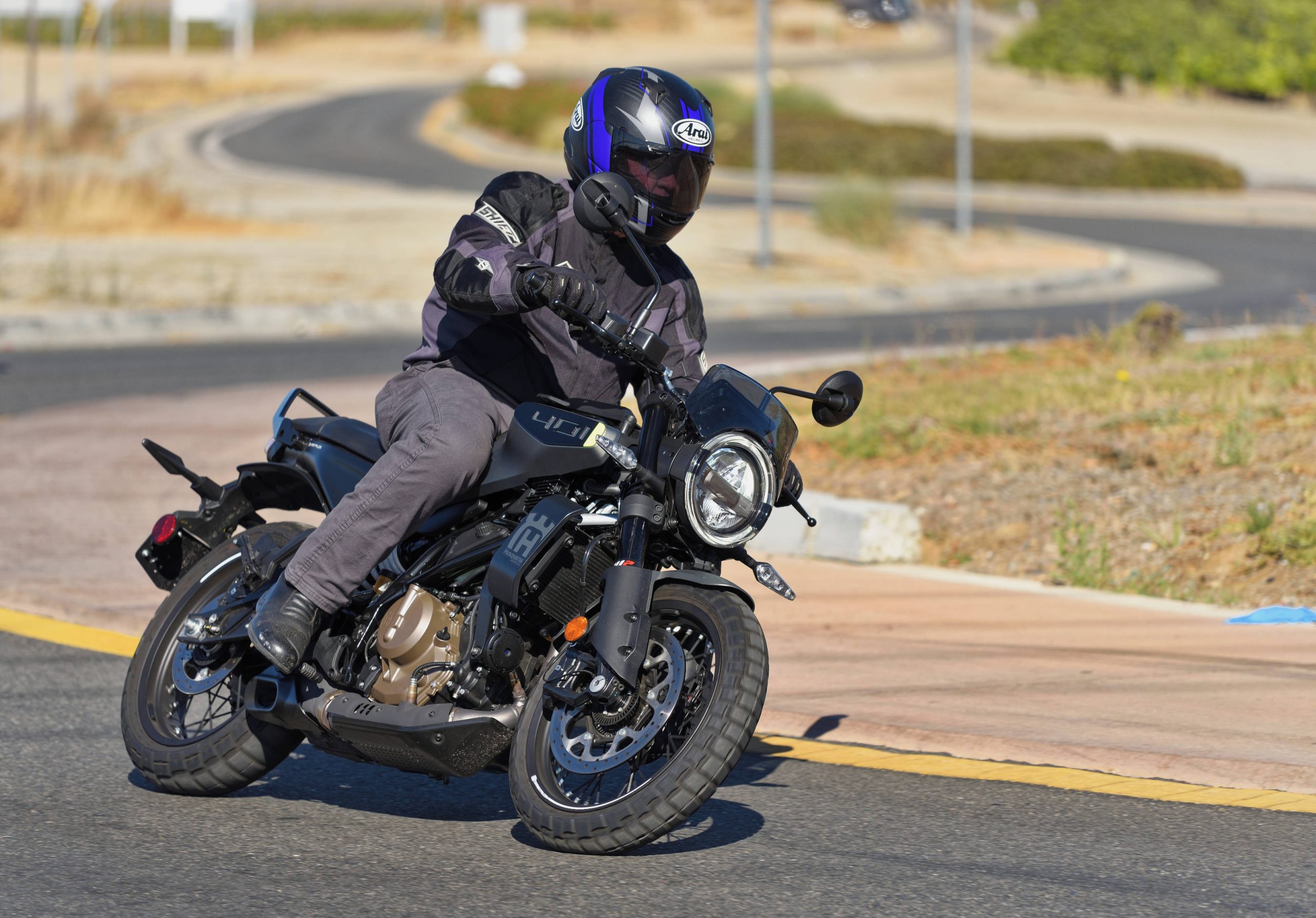
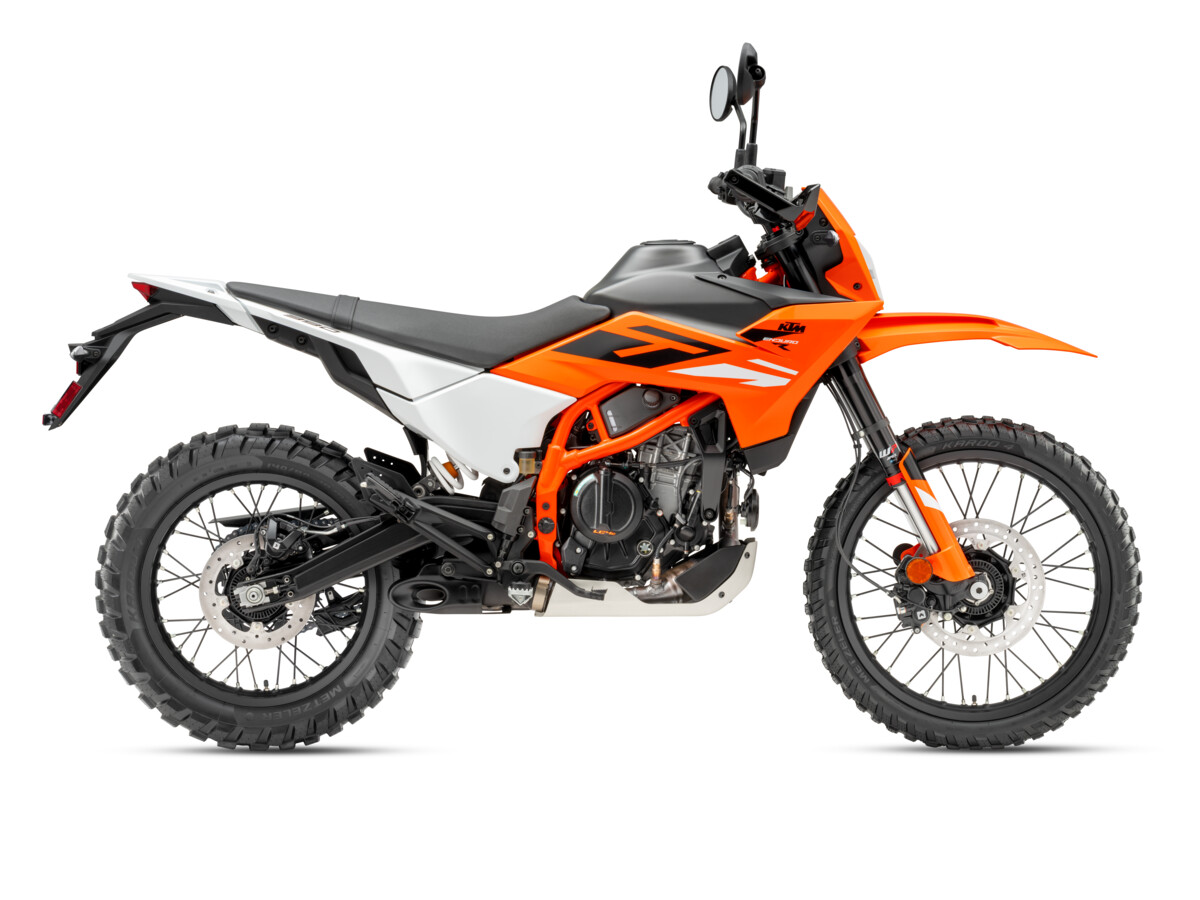
I would like to get a small disacement bike or scooter for commuting purposes. Like a Suzuki Burgman 650 or a BMW C650. I have noticiced wben I go shoppi g for one, I always get these meathead salesmen trying to sell me some fatass overweight cruiser bike. They always say scooters are for girls or you want a real mans bike. This sort of attitude will not get you new customers.
another interesting article about motorcycle ownership in the US
https://www.asphaltandrubber.com/news/motorcycle-usa-household-ownership/
That is interesting. I always wondered how strong the used market was vs. new units. Obviously, new bike vs. used bike doesn’t have much bearing on the statistics provided here concerning a large portion of the market size beginning to age out, but I was surprised to see that ridership (or at least ownership) is increasing. As an observer, I certainly haven’t gotten that impression over the past several years.
Great recap! I also started on a Honda 55 Sport in 1963 and then moved up to a Yamaha 125 and a Yamaha 250. I was working at a Yamaha/Triumph dealership and our largest bike was the Triumph Bonneville 650. Yamaha’s was a 305. I do disagree however that there aren’t many options to downsize. There are Yamaha’s MT series, especially the MT-07, Kawasaki’s Z400 and Z650, Honda’s CB500 and 650, Royal Enfield’s new Interceptor and Continental, and many more. Even Indian’s Scout is a lighter and easier to handle bike.
At a soon to be 69 I know I am getting near the end of my riding career. degradation of skills? Of course. It comes with age. I try to ride everyday to keep what skills I have left sharp.An average of 300 days and 25,000 miles a year. I’ve done my part for the motorcycle manufacturers. Bought my first new street motorcycle in 1965 (50cc $318), bought my last new motorcycle about 9 months ago (1300cc $16,000), and bought 29 motorcycles in between those 2. I might have one more purchase left in me. A smaller bike, maybe 500cc. We shall see.
The MC industry is in trouble there is no doubt. So many of us got our start riding in the late 60’s and early 70’s when you could buy street bikes, in small cc increments, from 50cc to 750cc it seemed. Buy a small one, get used to it, move up a class. 50, 160, 175, 200, 300, 350, 400, 450, 500, 550, 650, 750. Seems today’s choices start at 400 go directly to 750 then directly to 1000 and the 400s are nearly as fast as the 750’s we had a choice of.
Those of us starting in the 60’s are indeed aging out, and you don’t see many young people taking up the sport. There certainly aren’t enough women joining the ranks to make up for those of us aging out. For the record there have always been women riders.. my mom rode, my older sister rode, my wife rode, my son’s wife rode, and her mother rode, but none were lifetime riders or had multiple bikes. Every male in my family has been a lifetime rider and had multiple bikes. At one time I had 6, all riders, no junk.
Times are changing in the MC industry and I agree with whoever said the 60’s to 90’s were the golden age of motorcycling. I too am glad I was there for it. So many choices … of really exciting motorcycles. Yes we have some pretty exciting motorcycle being produced today. 200 hp, able to run nearly 200 mph, electronics out the wazoo. Unfortunately for the manufacturers those of us willing and able to buy them as a group are becoming smaller and smaller. At my age, and with degrading skills, a $30,000 200 hp rocket is not in my future. A $7000 50hp 500 twin might be though. Like I said, we’ll see. By my age my dad had already moved down from a Harley dresser to a 350 four to a CB 175 Honda twin. I’m still riding a 1300 and an 1100. They may just be my last bikes.Like I said time and life will let me know if I have any more purchases left in me.
I always found it interesting how many different displacement options you “golden age” riders had, and on virtually the same bike no less.
Times have definitely changed, and the industry is indeed in trouble. Social acceptability issues, risk, fewer places to ride recreationally (dirt or street), and so many more luxuries competing for smaller and smaller slices of disposable income. For the circles I run in, it’s time rather than money that provides the barrier. I’ve known several guys in my age group (I’m 42) – people who have ridden virtually all their lives – to sell their bikes in recent years because they just can’t make the time to really enjoy riding anymore.
Even I don’t ride on the street for pleasure anymore, and I’ll likely sell both of my street bikes this year when summer comes along. Too many other things take up my time right now. At least one of those things is dirt riding, so I’m not a total loss for the industry!
yea I didn’t really even list them all Jeremy..let me think 50, 65, 90, 100, 125, 150, 160, 175, 200, 250, 300, 350, 380, 400, 450, 500, 550, 600, 650, 700, 750, 850, 900, 1000, 1100, 1200, 1300 and I may have missed a displacement or two lol
The MIC stats look about right. I am 72 and I own four bikes: an Aprilia Tuono, two Yamahas and an Indian, and my wife has a Yamaha FZ07. I ride them all during the season (winter in Canada is mostly a no-go). I also belong to the Indian Motorcycle Riders Group and our average age is about 50 with a growing percentage of women riders who are mostly in their 40’s. I’ve spoken with many younger riders in their 20’s and they have the desire to get a bike (mostly used since that is what they can afford) but they are also up against ridiculous insurance rates here in Ontario, Canada which can often be as much as the bike itself. On the positive side, I was at a charity event last summer where there were easily 500 or more bikes (mainly sportbikes) and the riders were in their 20s to 30s. There is hope!
What’s the median age of the female riders I wonder? Are females actually coming in greater numbers than before, mitigating the decline of the market? Or are enough men aging out first that it just bolsters roughly the same number of women riders previously as a percentage of total riders?
Bikes like the Ninja 400 are perfect for female and older male riders. I often see these riders with bikes that are just too heavy for them.
Aprilia REST you are wrong. If the median age had gone down by 5 years that would have meant there were more younger riders. I have been riding 57 years, love my Ninja 650.
no, actually, his logic is right. If everyone in the market grew 6 years older and no younger riders joined and no older riders died, the median age should have increased by 6 years. Younger riders must have been added to only raise the median 5 years….
Ron – you are also right. Just more extreme. For it to DROP 5 years, a lot more younger riders had to join.
Of course, either scenario could have also been caused by a higher than average death rate among older riders…
Aprilia RST you are wrong. If the median age had gone down by 5 years that would have meant there were more younger riders. I have been riding 57 years, love my Ninja 650.
Modern bikes now cost a small fortune. There are lower cost small displacement bikes but good ones are not cheap.
Used bikes take either mechanical skills or money to bring up to snuff. Young, potentially new riders posses neither from what I see.
Perhaps if there was some sort of app……
“Modern bikes now cost a small fortune.”
How much less would high-end bikes cost if they didn’t have all of the complex electronics? I know a lot of riders love them but I think they aren’t necessary, with the exception of EFI which we have to accept for environmental reasons. I’ve ridden aggressively for 46 years without serious injury and without electronic safety devices to assist me. They add to the cost of a new bike. They require specialist knowledge and equipment to work on. And they can be very expensive to repair when they fail.
In the past we believed that only the best riders should buy the fastest bikes and others should choose bikes suited to their ability. Now everybody thinks they are entitled to ride really powerful bikes and rely on electronics to make up for their lack of ability. But it all costs a lot of money.
The interesting thing is that the electronics really don’t cost much. In fact they might even save costs in various ways- instrumentation is usually cheaper that way, better fuelling saves gas and potentially service costs.
Whether the manufacturers pass any savings on is another matter of course.
Instrumentation and fuel systems are essential parts of a motorcycle. I thought it would be obvious that I was referring to non-essentials – mostly electronic rider aids. Compare the prices of different versions of some bikes. For example, the Africa Twin was originally available as a base model without rider aids, as well as a much more expensive version which had ABS, TC etc. A large part of what you pay for is the development costs. Mike said that bikes are getting too expensive and that is putting off buyers. How much of that cost is for non-essential electronics systems? I prefer to ride without these systems and that can save thousands off the price of high-end bikes. The electronics companies are not doing this because they love you and want to keep you safe. They are doing it because they love the income that it generates for them.
The Kawasaki Versys 1000 is a bike I’ve always desired because I like that type of bike and it has an I4 engine (my favourite configuration). The new model has had a massive price increase. As far as I can tell from what I’ve read, the main difference is the extensive electronic systems added to the bike. But instead of being a bike I would like to buy, it has become a bike that I think costs more than it is worth.
The sensors and other hardware don’t cost much to produce. It’s the software that you are paying for.
At the upper end, motorcycle prices have risen much slower than inflation. Ducati sold 916’s as fast as they could make them for $15k+ over 20 years ago. That same amount of money goes a VERY long way in a motorcycle dealership today. I haven’t found insurance rates to have gone up significantly in that time, either (I once got a RIDICULOUS quote for my old Superhawk, 17 years ago), but then the pool of riders is getting smaller so some increase would be natural.
What’s gone away are young people with disposable income. That, along with increased urbanization is also leading to the overall number of drivers decreasing.
I think you over estimate how much of a sales success the 916s were.
these figures in the included graph are from Ducati
https://www.asphaltandrubber.com/oped/ducati-superbike-first-year-sales-analysis/
Those are just sales figures with no context, so they really don’t tell us much of anything with respect to sales success. For example, those unit sales of the 916 in 1994 might represent Ducati’s maximum potential for production of that particular model back then, in which case the bike would be a sales success.
I don’t know if that is the case of course, but the chart really doesn’t tell us anything more than units sold and market share. The factors that truly determine whether or not it was a sales success aren’t on the chart.
I’m in my sixties now and can feel the early signs of losing my edge. It’s not enough to stop me yet, but it saddens me a little bit to realize that the day may come when I’ll have to scale back and eventually abandon motorcycling. Looking back, I believe that the 60’s and up to the end of the 90’s was the golden age of motorcycling. I’m so glad I got to live during this period. Now I know this may sound a bit deep to some but, I am a Christiian, and I have a real hope that I will be enjoying motorcycling on the New Earth. And why not! Just because I pass on to the next life doesn’t mean that I will not be interested in motorcycling. I will still be me. And for me there is a great hope and an everlasting future without the decay in this life. Imagine being able to ride in a perfect and beautiful environment. Now I realize for many this sounds absurd and far fetched. But for the Christian believer, all is not lost!!
Interesting stats. Was at the Minneapolis motorcycle show last Saturday and I was struck by the prominence of guys with gray hair in both the BMW and HD pavilions. I’m 60 – my son (age 23) and I own 12 bikes between us and I plan to keep riding until I have to revert to a Ural with a sidecar or I’m dead (hopefully not the latter). I encourage everyone I know who is younger than me to consider riding, I invite people on group rides, and I offer to help any new rider to shop for a bike that fits their talent and needs. It takes local action to build ridership. I no longer hang out with some of the ‘vintage’ clubs because the old guys (predominate stereotype) like to work on and talk about bikes but rarely ride more than a few miles a week. There is almost no appeal by vintage clubs to anyone under the age of 35. Affordability and smaller size motos are the key to attracting younger riders – I hope that trend continues.
I was there too on Saturday morning and we noticed all of the gray/silver Dudes. There were very few, if any, millennials hanging out. Ducati, Triumph and Yamaha weren’t there and apparently Harley didn’t have a factory exhibition, only a local dealership representing them. Zero was there and quite impressive. Somehow we need a feeder chain for new people to get into biking.
That’s the problem,
The only thing that is relatable is bikes. Young bucks dont want to talk to old folks, hang out and vice versa. It’s cool to hear stories and knowledge, but people just want to hang out with their own age group.
Back in the day…..tune out now….most riders worked on their own bikes and modified them by themselves. As that eroded prices rose, cars got much better, too many riders caused too much noise and mayhem on the roads. Add in that the largest amount of population baby boomers started aging out. I was lucky and enjoyed th ebest of times and the worst of times. Its nearly over for me due to age but I’m still sad to see this trend continue. Average of 50? No hope there.
I rode from early in my 14th year till I was 69… I took MSF/ERC Classes, rode cross country multiple times, and was confidant in my ability… From 65 on, I could tell my ability was degrading ‘a bit’. From age 69 to 70 I didn’t ride…. Last year I sold both bikes… Why??? It was time….
Do I miss it? Sure! Would I have done it again–The Riding — the Selling? Absolutely!
Do I have any regrets for selling them last year? No…. It was “Time”…..
It was a good run….. Riding and Owning from 14 to 70… I still walk by bikes in the parking lot to examine them….
You folks “Ride Safe” now!
When I was a young sailor this Chief once told me that there are lies, damn lies, and statistics!
I’m one of those “continually aging” they mentioned. And I’d like to think part of the reason there are more female motorcyclists.
You sure they’re CIS?
The average age about followed the years and median household income went down. Most of those bikes are garage jewelry. Would like to know the average mileage per year.
There is also the important fact that motorcycle sales do not exist in a vacuum. Other products such as UTVs like the Polaris Rzr compete for dollars and with their two and four seat models are seen as an easy family purchase that is safer than riding bikes and allows the whole family to participate. I have one myself.
Cars too are much faster and more fun to drive, and sexy and more likely to scratch the itch of owning and using machinery. Hell, even yard tractors are scratching that itch and they are much safer.
As a boy and young man many moons ago it was the machine ness of motorcycles which attracted me. The experience too, especially of speed. Your average Civic now is much faster than my fist bike, a Ducati 250. Which caused a day of numb hands in a 1 hour ride.
As great as roads and the machines we have built to travel them have been they have irrevocably altered the planet. To mitigate that the rear guard actions to reduce the change is making them more expensive. The younger generations are intuiting that the price is too high. My ability to travel across the continent at high speed in the open air has been one of the highlights of my life and feel lucky to have been able to do it. But……
I’m puzzled about the popularity of UTV’s. For all the advantages you stated (family participation, relative safety) there are a raft of disadvantages. Public offroad vehicle areas are limited, and seemingly becoming more rare over time. You need a trailer, a vehicle capable of pulling same, and much more garage space to store them. Especially since UTV’s are getting larger each year.
I mean, have you seen these things lately? Some of them are easily the size of a compact (not sub-compact) car, and cost nearly as much, too. At some point, I’m wondering when potential customers will realize that for not much more money, they could just buy a Jeep Wrangler and have a vehicle they can also use the other 99% of the time.
They can be registered in a lot of places, so I can certainly understand why they might be popular as a beach/mountain/desert town runabout in such areas. I could also see why someone would want one as a work/play vehicle if that had a large property.
But my ability to understand UTVs can’t extend beyond that, and even that is a stretch as I’d personally just a buy a Jeep which could do all of that an more.
My wife, on the other hand, seems to like them and flirts with the idea of buying one every now and then. She likes the idea of the whole family being together. (I prefer the idea of the whole family being together but separate, on their own machines. Much more fun!) And just as much, she likes the idea of seat belts and roll cages, windshields and roofs. (Boo!) She still can’t explain why the UTV has more appeal than a Jeep, though.
Jeremy, the fact that they’re so user friendly and there is a perception of better safety than a bike is what makes them so darn popular. And they’re pretty stable in regards to roll over. And they’re actually easier and cheaper to maintain and fix than a Jeep. But yeah, I get it, the Jeep can drive itself everywhere.
.
I’ve hauled my 450s out to NM, AZ and CA a bunch of times over the years to meet friends for some fun in the dunes. Cloudcroft, Glamis, Ocitillo Wells… Every one of those places, side by sides “far” outnumbered two wheelers, and the whole family was having fun in them. Sometimes all together, sometimes separately. Even the 13 year old daughter would drive the thing and it would rail for her. I can name about 10 places in Texas to go. So the parks exist.
.
But I think if ranches and other land owners are buying them, it’s for true utility and they’d never be a MC potential customer anyway. So they can’t be counted for taking away a MC sale.
In the frozen north of Dakota Minnehoeta, a UTV with tracks is the most comfortable/affordable machine in the snow. Ice fishing is accessible, no matter what the conditions. A lot of ranchers and farmers like them cuz they’re so maneuverable and useful. A UTV all set up with tracks, heated cab and accessories will set you back 30 grand +. I still want one real bad tho. I’ve got 2 bikes sitting in a heated garage but my wife would be so pissed if I came home with one of these. Oh wait, I don’t have a wife….!
I can definitely understand the appeal of a UTV over a motorcycle. Same appeal as a quad over a motorcycle. It is the UTV vs Jeep thing I don’t really get.
But you make a good point about it being more accessible. A younger kid is much more likely to be able to pilot a UTV without issue vs a Jeep. The UTV is probably also less prone to rolling, too. And likely easier to get back rubber side down if you do!
I have a Honda 919 and Suzuki Burgman 650. I push my Bafang 1000w ebike passed them, out of the garage. I’m 78. If I don’t pedal to my Pickleball game, mostly every day, I feel seized up.
I too pass my Honda 919 on the way to my truck. It will be sold in the spring. It’s fast, maneuverable and a mechanical joy to this engineer but the roads are congested with electronically distracted drivers in ever larger vehicles.
Riding my bicycle is better for my heart. After 50 years of motorcycle riding, the motorcycle needs to go.
I’m 63 years of age and just the opposite. When I was young I lived on my bicycle, going for 120 mile rides with a buddy was nothing special.
I started riding motorcycles when I was 30 and have so since.
Now I fire up my VFR and roll out of the garage as much as possible and occasionally take my Cinelli SuperCorsa out for a spin.
I have NO plans to give up motorcycling and love my VFR.
I had no “plans” to stop riding motorcycles. Aging happens unless you die young. The 919 is a marvel but for somebody younger with better reactions and that heals faster. The motorcycle will be dearly missed.
Ride you motorcycle while you can.
The data doesn’t tell the whole story. Women riders have bikes but do not put the miles on that men do or own multiple bikes like myself and the other men in my motorcycle groups I belong too. This means the industry cannot count on selling replacement machines to women. The bikes I and my male friends buy are expensive but I am 65 so the industry is in trouble as we all age.
You may be wrong. I see many female motorcyclists on the road. A woman (a millenial woman) at my place of work doesn’t own a car and rides her SV650S to work every day. Since I’m a man, I also ride every day, but I do own a truck…
I agree with Superadventure, few women riders I know have multiple bikes, but a high proportion of male riders do. And few women I know do the distances/hours men tend to.
My wife would like more HP than her CBR250 has, but isn’t willing to give up the agility and “fun factor” of the 250. We are both retired and our current bikes (I have an F6B Wing) will likely be our last. Over 40+ years riding, I had as many as a half-dozen bikes at one time, running and projects/parts.
I have been around motorcycles/groups a long time and know exactly one woman who has multiple bikes but no car.
I’ve been riding like an old woman for a long time. Turns out I have been a trendsetter!
lol
So I guess Pink is the new Black for Harley riders?
Female rider percentage increasing doe not necessarily mean that more females are riding, just that their total is higher REALTIVE to the total of male riders. I suspect that this particular statistic has changed mostly because of a significant drop in male riders overall in the past several years.
Funny that the MIC doesn’t publish the North American non-riding public’s attitudes towards motorcycling anymore. The last survey that covered this was at a decade ago and went like this: 25% positive, 33% neutral and 42% negative. So 75% of the general public either doesn’t care about motorcycles or have a negative view.
The numbers given in the article don’t show much luck in converting the 25% of positive-attitude non-riders into riders. Treading water is probably the best analogy for motorcycling in North America. The core demographic (Boomers) are literally dying out, and either kids can’t afford to ride or Mom and Dad are in the “neutral/negative” group that won’t pay for a kid’s bike. Interesting that the MIC lists the insurance industry as one of its partners… just look at the steady increase in premiums while coverages and payouts drop. With “partners” like that, who needs adversaries?
Well, in the SIX years between 2012 and 2018, the median age only rose by FIVE years!!
That shows progress in attracting new, younger riders.